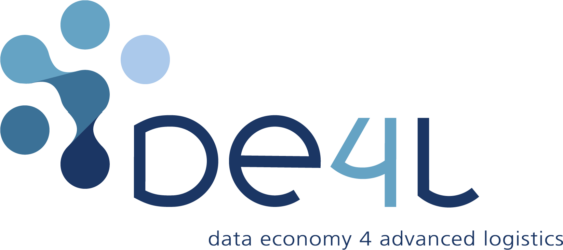This is the place where we will keep informing about the progress and corresponding results in the DE4L project.
Available contents as a link list:
- Architecture for the Integration and Analysis of Sensor Data in Real Time
- First online version of the DE4L Platform Portal (Platform Hub)
- Sensor Analytics application
- Delivery Zone Data Management web application
- Air quality measurements
- Scientific article
One of the first milestones in the project was the design of the Architecture for the Integration and Analysis of Sensor Data in Real Time (see diagram). It was achieved in collaboration with the project partners in the 3rd quarter of 2020. At this stage data flows and interfaces for sensor data were examined, drafted and the initial prototypical developments were evaluated.
One of the elementary requirements in the development of the architecture was the data transmission between heterogeneous sensor nodes and target systems which communicate with different protocols and data formats. As a solution a multi-protocol IoT Gateway was developed. It integrates sensor nodes via MQTT, REST and LoRaWAN protocols. With LoRaWAN, data can be sent over long distances and with good energy efficiency. The LoRaWAN network provided by the local energy provider Netz Leipzig was used for the developement purposes. The project also investigates data security concepts for LoRaWAN communication.
The DE4L sensor data platform is based on a Kappa- and service-oriented architectures in order to ensure high scalability and Real-Time Analytics. Furthermore, the focus was placed on the use of established standards, such as the SensorThingsAPI and the connection to the Fraunhofer International Data Space (IDS), in order to make the sensor data available to the other DE4L platform components on the one hand, and on the other to enable cross-company data trading and integration into external systems later in the project.
A first version of the DE4L platform portal (Platform Hub) has been published online. The portal serves for the users of the DE4L platform as an entry point to the various applications.
Two applications can be already accessed: the Delivery Zone Data Management application, which is used to process and display additional information on address data (see below) and the Sensor Analytics application, which already visualises the first analysis results of sensor data on a interactive map. Further prototypes will be added to the Platform Hub in subsequent project stages.
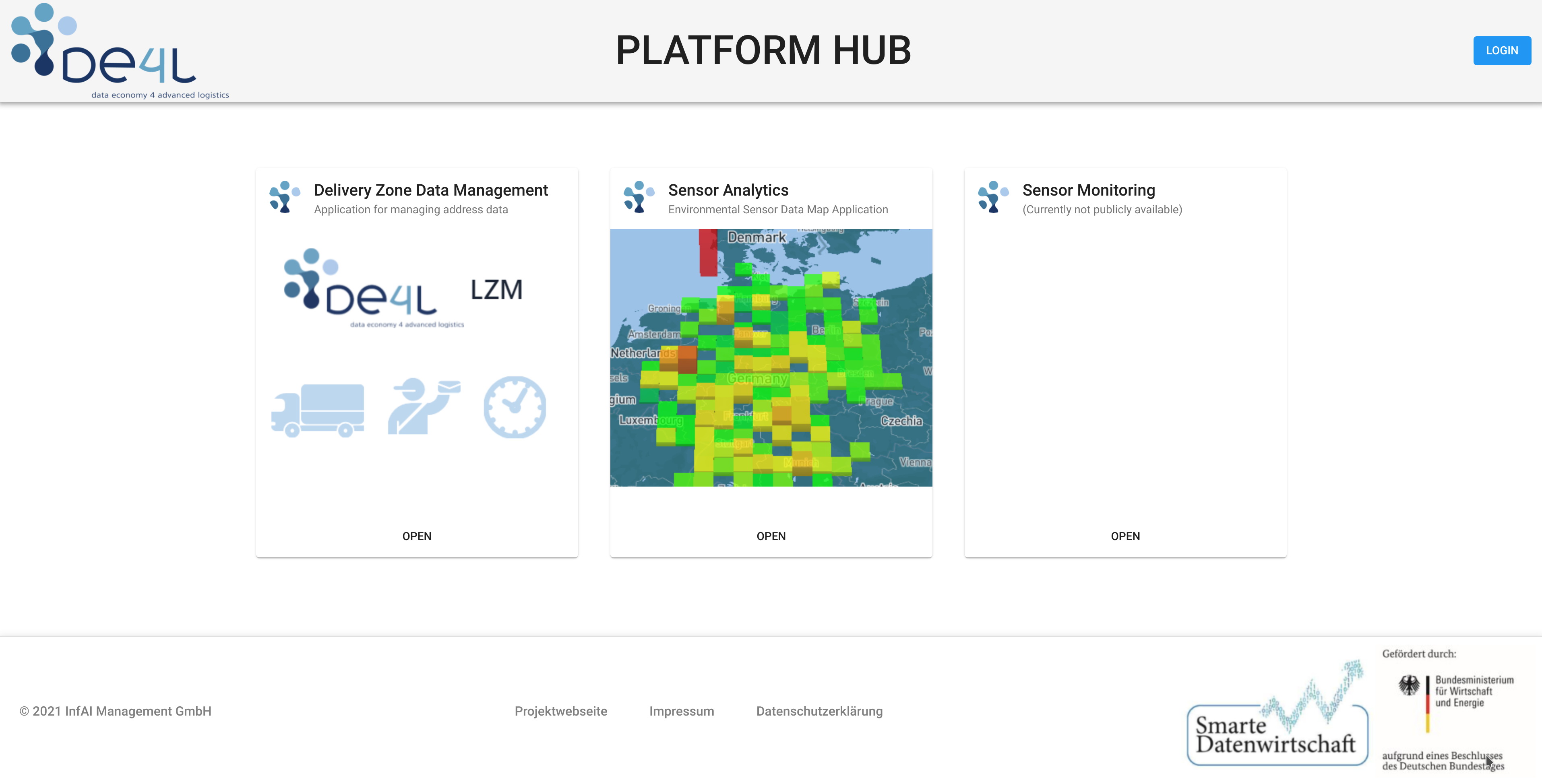
With Sensor Analytics application large amounts of sensor data can be aggregated and used for visual evaluation. For road condition analysis, vibration level data is collected during deliveries of the bicycle messenger service provider TiMMi. This data is assigned at the DE4L sensor data platform to road segments, which enables aggregations for analysis purposes. Sensor analytics application displays road segments in colours depending on the aggregated values of vibration level data.
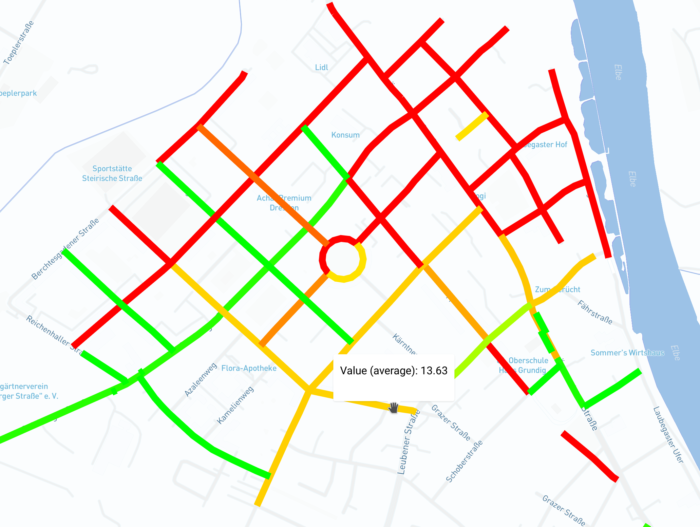
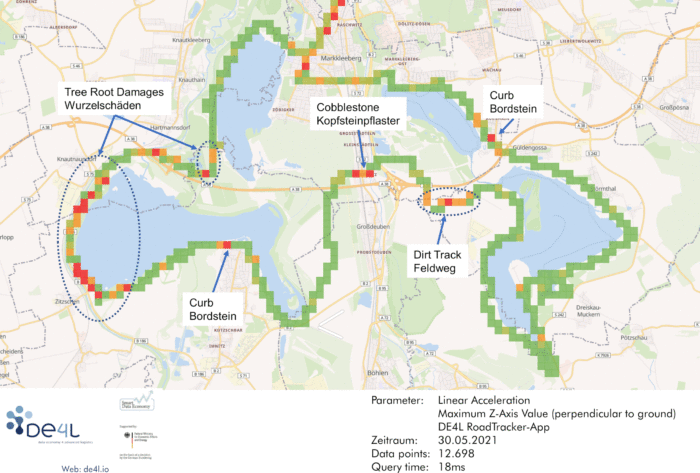
As part of the project, the Delivery Zone Data Management web application was developed, and it is already in use by fox-COURIER. In the application, supplementary information (such as opening hours, accessibility and directions) can be added to an (delivery) addresses. This information will help with further last mile deliveries to the recipient. This data will be offered to other logistics service providers via the DE4L platform . It concerns supplementary plain text address data as well as notes or pictures, which all represent an added value for delivery logistics processes.

In the trade of supplemental address information, the seller should retain maximum data sovereignty. To ensure this, the stored data is hashed in a feature-preserving manner. For search purposes only the hashed addresses are used in order to avoid exposure of the full, plain text . The data offers are exchanged between the platform participants via a blockchain. This was prototypically implemented in a trading client with a web frontend. First smart contracts were written to define the rules for trading.
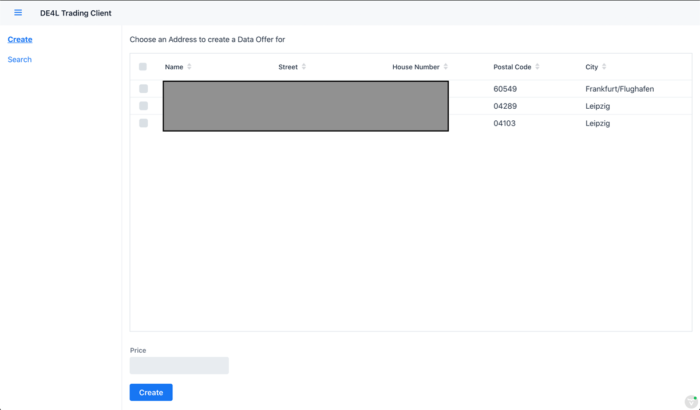
Furthermore, promising privacy-preserving techniques were investigated and a strategy for their implementation was developed. In addition to methods that employ obfuscation techniques and anonymisation, also a machine learning model for artificial compilation of privacy-preserving and statistically equivalent data is examined in more detail here.
Data is already being collected – fox-COURIER vehicles have been equipped with mobile AirBeam2 air quality sensors from HabitatMap. Thus, since February 2021, environmental data for PM1, PM2.5, PM10, temperature and humidity are measured when couriers are on the road.
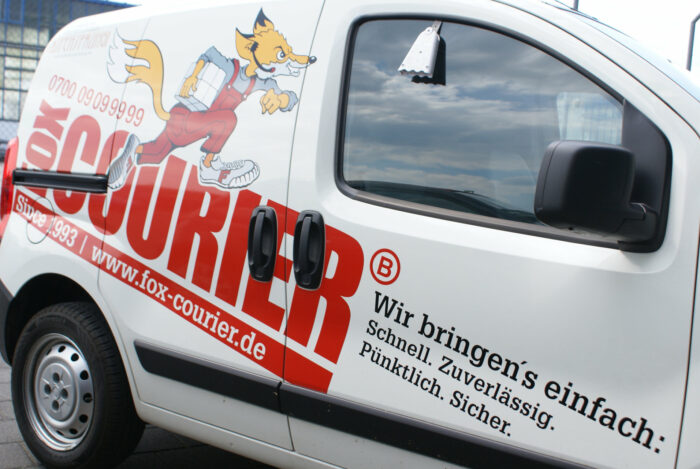
The measured values are transmitted from the sensors on the vehicles via Bluetooth and smartphone app in real time to the DE4L sensor data platform. The data is thus directly available for analyses (see map visualisation) and downstream application systems. This data will be made available for privacy compliant data trading.
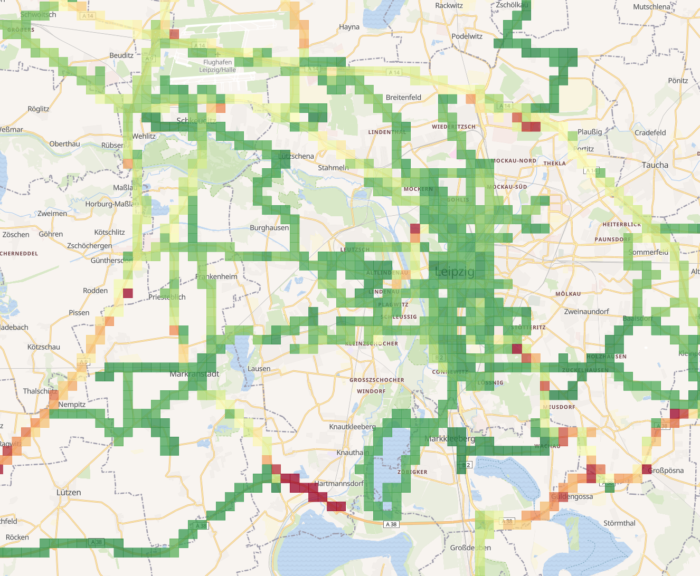
The Android application developed for sensor data transmission was published as an open source project on GitHub and is also now available on the Google Play Store.
The potential use of the International Data Space (IDS) and the DE4L platform for data-centric services was investigated. The exchange of IoT sensor data between multiple actor systems via the IDS was considered and the IDS connector was prototypically extended.
The results were published in German in the 2020 Logistics Journal (link):
Olms C, Nissen C, Schier A, Leveling J, Rademacher R, ten Hompel M (2020). Architektur einer adaptiven Plattform für unternehmens-übergreifende datenbasierte Dienste mit dem International Data Spaces. (Architecture of an adaptive platform for cross-enterprise data-based services with the International Data Spaces). Logistics Journal : Proceedings, Vol. 2020.
